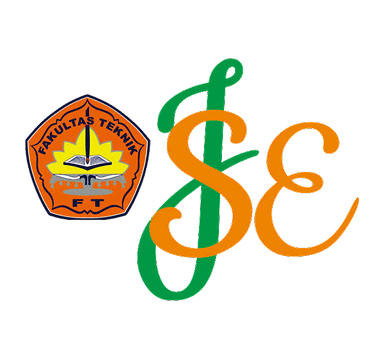Pemanfaatan Internet of Things untuk Monitoring Deteksi Tanah Longsor
Keywords:
Early warning, Internet of Things, Landslides, MicrocontrollersAbstract
Landslides are one of the most common natural disasters in Indonesia. This disaster can cause significant material losses and casualties. Therefore, a landslide monitoring system must be an early warning system. Prevention is one of the important steps to reduce the negative impact of landslides. The existing landslide early warning system still needs improvement, including low accuracy and slow response in providing information. This research aims to create a product, which we have named DinSor, as a landslide early warning system by utilizing the Internet of Things (IoT). The proposed system uses IoT-based sensors to detect changes in ground conditions, including soil movement through ultrasonic sensors and the degree of soil water content through soil mixture sensors. The data generated by these sensors is then displayed on the website as graphs and numbers for analysis. The trial results show that the developed system has advantages in detecting potential landslides. The system's response in providing information has also proven to be accurate and precise, with warning times shorter than previous systems. When the sensor indicates a potential landslide, a warning message can be sent to the local regional disaster management agency via WhatsApp.
References
[1] A. Ridwan, Muhardi, dan M. Yusa, “Identifikasi Stabilitas Lereng Tanah Longsor Menggunakan Metode Elemen Hingga,” JURNAL TEKNIK, vol. 13, no. 2, hlm. 94–103, Okt 2019, doi: 10.31849/teknik.v13i2.3598.
[2] D. D. Nugroho dan H. Nugroho, “Analisis kerentanan tanah longsor menggunakan metode frequency ratio di Kabupaten Bandung Barat, Jawa Barat,” Geoid, vol. 16, no. 1, hlm. 8–18, 2020.
[3] R. K. Tejo, D. P. T. Baskoro, dan B. Barus, “Regresi logistik biner dan rasional untuk analisis bahaya tanah longsor di kabupaten cianjur,” Jurnal Ilmu Tanah dan Lingkungan, vol. 18, no. 1, hlm. 35–41, 2016.
[4] M. E. Popescu, “Landslide causal factors and landslide remediatial options,” dalam 3rd international conference on landslides, slope stability and safety of infra-structures, Citeseer, 2002, hlm. 61–81.
[5] M. H. Hakim dan S. Winardi, “Sistem Pendeteksi Dini Tanah Longsor Menggunakan Sensor Vibration Berbasis Internet of Things,” Jurnal Pendidikan Teknologi Informasi (JUKANTI), vol. 5, no. 1, hlm. 101–110, Apr 2022, doi: 10.37792/jukanti.v5i1.450.
[6] R. Hidayat, “Analisis Numerik Pengaruh Infiltrasi Hujan Terhadap Stabilitas Lereng Di Pangkalan, Sumatera Barat,” JURNAL TEKNIK HIDRAULIK, vol. 11, no. 1, hlm. 25–36, Jun 2020, doi: 10.32679/jth.v11i1.630.
[7] R. Hidayat, I. P. E. P. Wijaya, dan Moh. D. Munir, “Mekanisme Longsor Akibat Infiltrasi Dari Genangan Air (Studi Kasus Longsor di Lahat, Sumatera Selatan),” JURNAL TEKNIK HIDRAULIK, vol. 14, no. 1, hlm. 1–12, Jun 2023, doi: 10.32679/jth.v14i1.701.
[8] A. Y. Effendi dan T. Hariyanto, “Pembuatan Peta Daerah Rawan Bencana Tanah Longsor Dengan Menggunakan Metode Fuzzy Logic. (Studi Kasus : Kabupaten Probolinggo),” Jurnal Teknik ITS, vol. 5, no. 2, Des 2016, doi: 10.12962/j23373539.v5i2.17190.
[9] D. Kazmi dkk., “Slope remediation techniques and overview of landslide risk management,” Civil engineering journal, vol. 3, no. 3, hlm. 180–189, 2017.
[10] B. Pereira dan W. Fernandes, “Gabion Walls—A Remedial Measure for Slope Stabilization,” 2023, hlm. 409–419. doi: 10.1007/978-981-19-7245-4_36.
[11] J. P. H. Waskito dan D. S. Raharja, “Comparative Study of Conventional Cantilever Wall and Mechanically Stabilized Earth Wall for Slope Failure Remediation,” Journal of Civil Engineering, vol. 38, no. 3, hlm. 160, Des 2023, doi: 10.12962/j20861206.v38i3.19457.
[12] P. Rimoldi, M. Lelli, P. Pezzano, dan F. Trovato, “Geosynthetic Reinforced Soil Structures for Slope Stabilization and Landslide Rehabilitation in Asia,” 2021, hlm. 397–404. doi: 10.1007/978-3-030-60319-9_45.
[13] S. Aziz, “Remediation of rainfall induced landslide in hills of Bangladesh using vegetation and nailing,” Post graduate dissertations (Thesis), Bangladesh University of Engineering and Technology, Bangladesh, 2020.
[14] A. Gunawan dan T. Gouw, “Protection of Slope Surface with Geofoam Versus Compacted-fill,” dalam Proceeding of International Conference on Landslide and Slope Stability, Bali, 2019.
[15] N. Noviardi dan D. Dilson, “Internet of Things Untuk Mitigasi Bencana Tanah Longsor Studi kasus: Jalan lintas Sumbar Riau,” Prosiding SISFOTEK, vol. 2, no. 1, hlm. 68–73, 2018.
[16] R. M. Utama, I. Sucahyo, dan M. Yantidewi, “Rancang Bangun Alat Deteksi Tanah Longsor Berbasis IOT dengan NODEMCU ESP8266 dan MPU6050,” JIIF (Jurnal Ilmu dan Inov. Fis., vol. 06, no. 02, pp. 137–146, 2022.
[17] P. B. Widagdo dan R. Khasanah, “EWS (Early Warning System) Sederhana Sebagai Pendeteksi Dini Tanah longsor di Kawasan Desa Kenalan,” Jurnal Bina Desa, vol. 5, no. 1, hlm. 1–8, Feb 2023, doi: 10.15294/jbd.v5i1.40816.
[18] N. H. Sudibyo dan M. Ridho, “Pendeteksi Tanah Longsor Menggunakan Sensor Cahaya,” Jurnal Teknologi Informasi Magister, vol. 1, no. 02, hlm. 218–227, 2015.
[19] R. Y. Endra, A. Cucus, F. N. Affandi, dan D. Hermawan, “Implementasi Sistem Kontrol Berbasis Web Pada Smart Room Dengan Menggunakan Konsep Internet Of Things,” Explore: Jurnal Sistem Informasi dan Telematika, vol. 10, no. 2, hlm. 331228, 2019.
[20] I. Priyadi, F. Hadi, Y. S. Pranata, dan M. R. Razali, “Rancangan dan Implementasi Sistem Deteksi Longsor Berbasis SMS dan Progressive Web Apps,” ELKOMIKA: Jurnal Teknik Energi Elektrik, Teknik Telekomunikasi, & Teknik Elektronika, vol. 10, no. 1, hlm. 243, Jan 2022, doi: 10.26760/elkomika.v10i1.243.
[21] N. K. D. Parwati, D. M. Wiharta, dan W. Setiawan, “Rancang Bangun Sistem Peringatan Dini Bahaya Tanah Longsor Dengan Sensor Hygrometer Dan Piezoelectric,” E-Journal SPEKTRUM, vol. 5, no. 2, hlm. 183–190, 2018.
[22] J. K. T. Lengkong, M. E. I. Najoan, dan F. D. Kambey, “Sistem Monitoring Dan Peringatan Dini Zona Rawan Longsor Berbasis Internet Of Things,” 2022.
Downloads
Published
Issue
Section
License
Copyright (c) 2024 Danang Setiya Raharja, Soepriyono, Andaryati, Nia Saurina, Aris Setiawan Indras Pratama (Author)

This work is licensed under a Creative Commons Attribution 4.0 International License.












